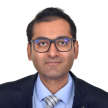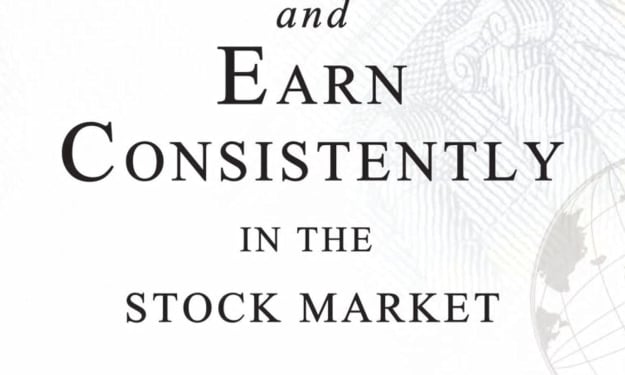
Overall Summary
Rating: Four out of Five
Language: Five out Five (easy to read language, makes it easier to understand, negligible mathematics involved :-) )
Relevance: Good for people at any stage of their life, who want to start planning for personal financial freedom.
Who is this Book for?
This book is meant to plan your financial freedom. This is most suitable for those who have recently started earning, or started thinking about retiring early. People of any age segment - students, working professionals, individual entrepreneurs - can benefit from this book. This book is written by keeping US nationals in mind. However people living in any other country can equally use the concepts and frameworks described in this book, to plan their financial freedom journey.
Kindle vs Paperback?
Kindle !
I bought a paperback version from amazon. However, the pages of the paperback book are very thin, and words of the next page are partially visible while reading the front part of the page. This is annoying and confusing, and drives a poor reader experience. Hence, I recommend reading this book on Kindle. Kindle version of the book is 30% cheaper than the paperback, and you get Kindle quality reading with no double print to worry about.
My Top Three Quotes from the Book
In order to be truly creative, constraints are necessary.
Doing what you love and hoping for money to follow is risky. Follow the money first, and you can do what you love later
Don’t worry about how far you’ve fallen. Keep climbing!
My Magic moment while reading this book
I found my magic moment in chapter 14 of the book. Initially I was shocked, then I processed the chapter, and then I was like - “What ???? This shit is amazingly awesome-st”
In chapter 14, the author explains the rule of four, first presented as findings by Trinity University. The rule of four states that if four percent of your investment portfolio matches your living expenses, then there is a 95% chance of you making it thirty years without running out of money.
That was it - the base magic formula of becoming financially independent.
Imagine that your total investment portfolio grows by 10% yearly (average NASDAQ 100 index growth rate for the past 20 years). If you only need 4% of your portfolio increase towards your living expenses, then you are sorted. You will increase your wealth year on year by at least 6% compounded, while living off comfortably, and never depleting your principal invested amount. Crazy….. right !
In later chapters, the author consolidates on this concept. She helps firm up on the plan to become financially independent by covering other important aspects, such as creating the right portfolio, planning for stock market crashes, and what if you were to have kids!
However, this chapter got me to stop, think, and then pace across the rest of the book, armed with the playbook to become rich, retire early, and then follow my passions at my leisure!
Top three learnings from the book
1. Make Calculated, personalized decisions in life: The book explains that everyone’s situation is different. One should make decisions based on their situation, and future goals. One should NOT blindly follow the popular advice out there. Example: Follow your passions, if you are financially comfortable. If you are not, then choose an educational degree with the highest return on investment; Rather than giving up a career to follow your passion such as travel or writing - pick a career which makes you financially rewarding and is a good match with your skillset. Author directly advises readers to follow math in making key career and life decisions, to screen you from outside opinions and unrealistic hopes.
2. Different Mindsets, different goals, different strategies: Author talks about different mindsets - scarcity mindset, hoarding mindset, and freedom mindset. Each of these mindsets signals a different financial situation, which requires a different strategy. Scarcity mindset develops when you have less money, so less that your basic needs are not being fulfilled. You will do everything you can to save money, avoid unnecessary expenditures, and more importantly acquire high-in-demand skill sets to become valuable to this world. Hoarding mindset develops when your basic needs are fulfilled, but you start accumulating money, objects that you desire. This mindset should be avoided, and you should transition to the Freedom Mindset. Freedom mindset is at the core of this book. Freedom mindset is for those who aspire to become rich, millionaire rich, and retire early.
3. Bucket System to handle imbalances: Author talks about using a three bucket system to handle tough years while being financially free, and not on a salary. These three buckets are Portfolio, Cash Cushion, and Current Year Savings. In a typical year, dividends and harvested capital gains from a portfolio provide for your yearly spending. However, for years when there is economic recession, dividends and capital gains will be insufficient to support your yearly spending. For these years, you tap into a cash cushion to support your yearly spending, and then you fill back your cash cushion once recession is over, using dividends and capital gains from the main investment portfolio. This chapter gives you confidence that once living without a salary, you will be able to handle the ups and downs in the stock market.

Three things I liked about the book
1. Building credibility: Author uses multiple ways to build credibility with the reader. First, is her own success story of becoming a millionaire, and financial independence. Second, author uses publicly available data for historic index fund returns, and formula used in the book. Third, is the usage of university studies and published experiment data to support principles such as ‘Scarcity Mindset’. Fourth: the author opens up - revealing flaws in her, and mistakes that she made in her life. Example: splurging on fancy purses, till she realized it was a waste of time. Accepting her mistakes openly shows humility, builds credibility in the learnings she derived from her mistakes.
2. Personal Connect: As one reads through the book, one forms a personal bond with the author. The sequence of chapters in the book helps this happen. Initial chapters talk about the author's early days in China, struggle with poverty, which shaped her thought process and approach towards life. By doing this, the reader is involved in the (real) story in the book, and gets more keen to know how the author ended up being a millionaire, and how an average Joey can achieve this same feat.
3. Provides Hard Life Advice: Author states hard life advice, sometimes even contrary to popular beliefs. Example: Do not follow your passion yet. Follow money to become financially stable or free, and then follow your passion. Second great advice is that no one is coming to save you. You are not special to the world, and this world owes you nothing. You become special by acquiring skills in-demand.
Two things that could make this book even better
1. US focused advice which is not globally applicable: Some ideas and facts in this book are not applicable to all countries. Example: Index funds may perform better than actively managed funds in the US, but not in India - not yet. Author giving a couple more examples across the countries, or converting her approach to a generic mathematical based approach would have helped non-US readers.
2. What could go wrong? The book lays down a positive concept of an early age of financial freedom. It also lays down ways to handle stock market crashes. However, there are things that can go wrong, such as the dot com bubble in 2000, from which stock markets took 14 years to recover. Or a change in lifestyle of the person, such as increase in costs from newly retired and dependent parents, or a new hobby of keeping a pet at home. This, however, is not a serious limitation, as the author does mention in the book to do small side gigs, or do part time work to get that extra income that is needed by you. My view is that this book gives a general layout of the path towards financial freedom. This will work well for people who can maintain strict discipline in their lifestyle, and plan for ups and downs in their lives/financial life.






Comments
There are no comments for this story
Be the first to respond and start the conversation.